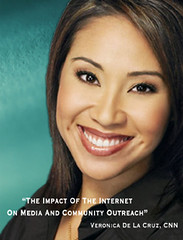Following the crisis that surrounds the Endoscopy Center of Southern Nevada over the last several months has been an exercise in evaluating futility. It can best be likened to crisis communication and common sense gone horribly wrong, with dozens involved in making decisions that resemble games of chance.
For example, the majority of physicians who helped Dr. Dipak Desai create a multi-million dollar gastroenterology business, which was closed after causing the largest hepatitis C scare in the country, are reportedly working together to reestablish practices in southern Nevada. Their decision has left the community perplexed.
The few who would comment might have refused to speak about the past and ongoing investigation, but were happy to offer that they wanted to “
get back to the community and give good quality medical care. Our patients deserve the best.” According to the story, at least three clinics may be opened by former Desai physicians.
For example, while no one had reported questionable procedures at the clinics, the investigation has revealed several nurses had complained and at least one quit on the same day she started. In addition to original reports of unsafe injection practices, the investigation has revealed that devices put in patients’ mouths for some procedures as well as single-use biopsy forceps that snip tissue were being reused.
These findings came after a poorly thought out full-page advertisement taken out in the Las Vegas Review-Journal last March. Since, most decisions seem to have followed public outcry.
For example, legislators seem to have prompted the state Board of Medical Examiners to take action after almost two months. The state’s attorney general just recently filed complaints against Desai and Dr. Eladio Carrera, another of the one of four co-owners, on behalf of the board. Both doctors were directly linked to patients who were infected. Desai had voluntarily stopped practicing medicine during the investigation weeks ago.
However, the once prominent physician continues to make decisions that further erode his credibility. The latest speculation, according to the Las Vegas Sun is that Desai may attempt to flee the country while multiple agencies continue their investigation.
The speculation arose after sources said Desai took ownership of two leased Mercedes-Benzes so they may shipped to the country of Dubai. While authorities have not charged Desai with any crime, authorities have flagged his passport, asking that they be notified if he tries to leave the country.
Sometimes public relations practitioners liken crisis communication to proper spin and damage control, rolling the dice on the location of press conferences or playing the “advice of legal counsel” card too frequently, when questionable actions — like shipping your cars off to another country — are patently more damaging than full disclosure.
Besides, sooner or later, public relations practitioners need to remember that reporters learn quick fix tactics as fast as professional dream them up. If you think they don’t know that press conferences are sometimes held across town to avoid on-site coverage, the only person you are really fooling is yourself.

For example, the majority of physicians who helped Dr. Dipak Desai create a multi-million dollar gastroenterology business, which was closed after causing the largest hepatitis C scare in the country, are reportedly working together to reestablish practices in southern Nevada. Their decision has left the community perplexed.
The few who would comment might have refused to speak about the past and ongoing investigation, but were happy to offer that they wanted to “
get back to the community and give good quality medical care. Our patients deserve the best.” According to the story, at least three clinics may be opened by former Desai physicians.
For example, while no one had reported questionable procedures at the clinics, the investigation has revealed several nurses had complained and at least one quit on the same day she started. In addition to original reports of unsafe injection practices, the investigation has revealed that devices put in patients’ mouths for some procedures as well as single-use biopsy forceps that snip tissue were being reused.
These findings came after a poorly thought out full-page advertisement taken out in the Las Vegas Review-Journal last March. Since, most decisions seem to have followed public outcry.
For example, legislators seem to have prompted the state Board of Medical Examiners to take action after almost two months. The state’s attorney general just recently filed complaints against Desai and Dr. Eladio Carrera, another of the one of four co-owners, on behalf of the board. Both doctors were directly linked to patients who were infected. Desai had voluntarily stopped practicing medicine during the investigation weeks ago.
However, the once prominent physician continues to make decisions that further erode his credibility. The latest speculation, according to the Las Vegas Sun is that Desai may attempt to flee the country while multiple agencies continue their investigation.
The speculation arose after sources said Desai took ownership of two leased Mercedes-Benzes so they may shipped to the country of Dubai. While authorities have not charged Desai with any crime, authorities have flagged his passport, asking that they be notified if he tries to leave the country.
Sometimes public relations practitioners liken crisis communication to proper spin and damage control, rolling the dice on the location of press conferences or playing the “advice of legal counsel” card too frequently, when questionable actions — like shipping your cars off to another country — are patently more damaging than full disclosure.
Besides, sooner or later, public relations practitioners need to remember that reporters learn quick fix tactics as fast as professional dream them up. If you think they don’t know that press conferences are sometimes held across town to avoid on-site coverage, the only person you are really fooling is yourself.






















